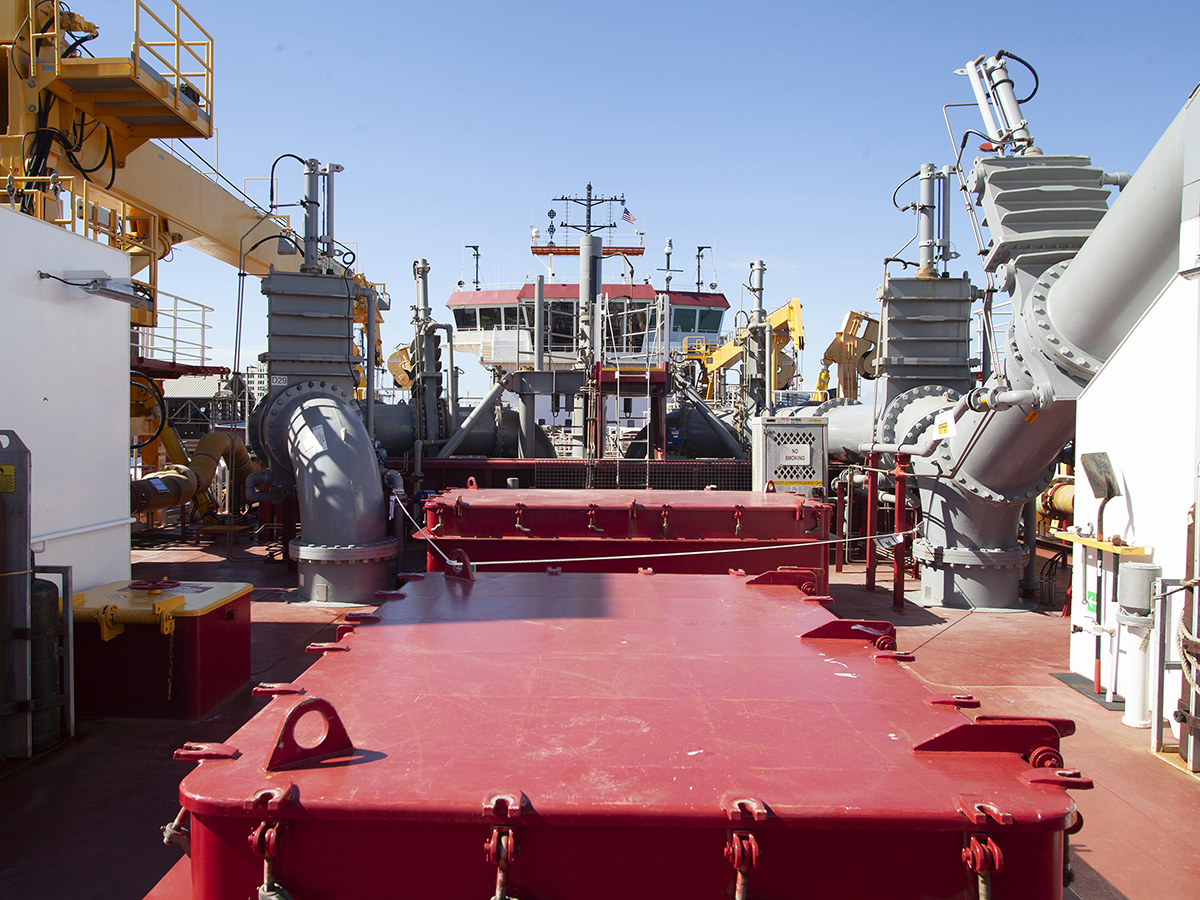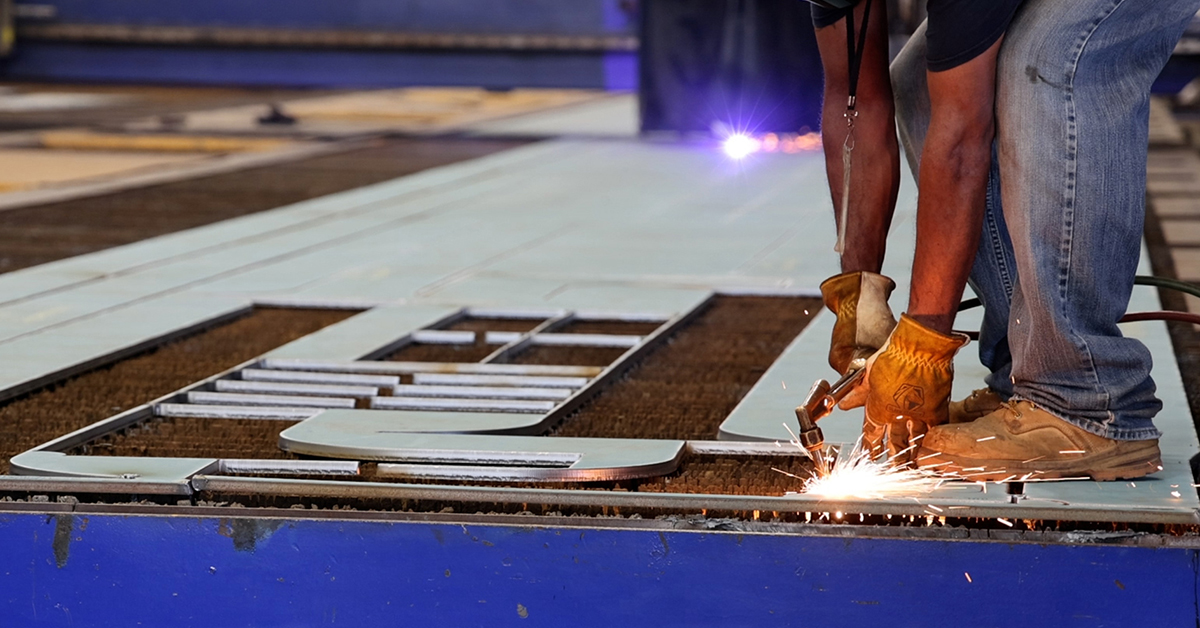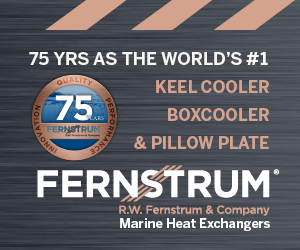Note: This story was published at the start of the 2025 IDR Annual Directory, an all-in-one resource for the dredging industry. Updated annually, the directory includes detailed contact and fleet information for dredging owners and operators worldwide. Additionally, it offers valuable information on the many shipyards, hydrographic surveyors, distributors, manufacturers and other vendors who serve the market. Order the 2025 IDR Annual Directory here.
The dredging industry in the United States is in the midst of a renaissance, or to put more technically, a period of recapitalization.
Take new build announcements, steel cuttings, deliveries and christenings from just the past year, for example.
Muddy Water Dredging held a christening ceremony in late April 2024 for the Vaneta Marie, a 24-inch Marlin Class cutter suction dredge from Reserve, La.-based DSC Dredge. Dredging industry veteran Michael Kerns and Matt Devall, who formerly served as chief financial officer of Devall Towing, formed Muddy Water Dredging in 2021 with the intention of entering the cutterhead dredging market. Speaking at the christening, Kerns said the Muddy Water and DSC teams approached the Vaneta Marie project with one simple question: “What would make us different from the competition?”
The result is one of the largest cutter suction dredges ever built in the United States, according to the two companies. Including its detachable carriage barge, the Vaneta Marie is 371 feet long. The dredge’s length and spud design make it capable of dredging a 400-foot-wide cut with an 80-degree swing arc. According to DSC, that amounts to an enhanced productivity rate of 5.9 percent.
The Vaneta Marie features two ladder winches and diesel-electric drive with Wabtec Tier 4 generators that deliver a total of 9,621 hp. The Wabtec engines use exhaust gas recirculation (EGR) rather than a urea after treatment to achieve Tier 4 emissions standards. The dredge is also equipped with powered lay-down spuds, which allow for repositioning the dredge as it’s working to further boost efficiency.
“On average, we expect to process about 2,000 cubic yards an hour,” Kerns said at the christening. “We’ll be running 24 hours a day, seven days a week.”
Muddy Water and DSC also hyped the Vaneta Marie’s cutting edge technology, which includes DSC Vision and Dredge Rx for tracking the contours of a channel in real time, thus eliminating the need to stop work and bring in a survey vessel.
Speaking at the christening, Devall highlighted the advantage that a new dredge has over older dredges that have been on the job for decades.
“At the end of the day, we’re competing against dredges that are 40, 50, 60 years old,” he said. “They don’t have the technology. They don’t have the culture. They don’t have the safety.”
Callan Marine’s 32-inch cutter suction dredge, the General Arnold, also came online early last year, with its first assignment being the Corpus Christi Ship Channel in Texas.
The past year also saw a lot of activity with regard to new trailing suction hopper dredges.
Conrad Industries delivered the hopper dredge Galveston Island, with a hopper capacity of 6,500 cubic yards, to Great Lakes Dredge & Dock (GLDD) in February 2024. The Galveston Island immediately went to work on multiple projects along the Gulf Coast. GLDD hosted a naming ceremony October 25, 2024, to officially christen the dredge into its fleet. In the five months between the Galveston Island’s delivery and its christening, the dredge moved close to 5 million cubic yards of material.
“That’s 20,000 cubic yards per day, every day,” said Chris Gusten, senior vice president of project services and fleet engineering for GLDD, speaking at the naming ceremony. “Think about that throughput.”

The Galveston Island measures 346.5 feet long with a 68.5-foot beam, a moulded depth of 23 feet and a draft of 20 feet, 5 inches. Max dredging depth of the Galveston Island’s drag arms is 100 feet. Fully loaded, the Galveston Island can achieve 12 knots, thanks to its Wabtec Tier 4 main engines. The dredge is also equipped with Tier 4 generators that use a urea after treatment, but the Galveston Island’s dual-shaft main engines can drive both its propulsion system and its generators. A second set of Wabtec engines powers the Galveston Island’s dredge pumps.
A sister vessel to the Galveston Island, to be called the Amelia Island, is due out from Conrad later this year, with plenty of work pending for GLDD’s fleet of dredges. In February, Great Lakes Dredge & Dock reported that it ended 2024 with a significant backlog.
“The bid market for 2024 hit a historic level of $2.9 billion of which Great Lakes won 33 percent,” GLDD President and CEO Lass Petterson said in a report to shareholders. “This further added to our substantial dredging backlog which, as of the end of 2024, stood at $1.2 billion, with an additional $282.1 million in low bids and options pending award, providing expected revenue visibility well into 2026.”
Beyond the forthcoming Amelia Island, The Dutra Group recently announced plans to build a 10,464-cubic-yard capacity trailing suction hopper dredge at Eastern Shipbuilding Group facilities near Panama City, Fla. Scheduled for delivery in late 2028, the hopper dredge Adele will join The Dutra Group’s other dredge, the Stuyvesant, a 9,870-cubic-yard capacity hopper dredge built in 1981 and upgraded in 1994. Manson Construction is also building a massive new hopper dredge, the Frederick Paup, at Seatrium AmFELS in Brownsville, Texas. The Frederick Paup, which will have a hopper capacity of 15,000 cubic yards, is expected to come online later this year.
Private dredging contractors aren’t the only ones recapitalizing their dredge fleets. The U.S. Army Corps of Engineers and Eastern Shipbuilding Group held a ceremony April 4, 2025, to officially cut steel on a new medium class hopper dredge the shipyard is building for the Philadelphia Engineer District. The forthcoming dredge, a design partnership of Eastern Shipbuilding Group and Royal IHC, will replace the dredge McFarland, which dates to 1966, and will mark the first new hopper dredge for the Corps since Ronald Reagan’s first term as president.
Driving all this new construction is continued channel and harbor deepening projects and longterm funding for coastal restoration and navigation projects.
Featured image caption: An Eastern Shipbuilding Group welder cuts steel to ceremonially begin construction of a medium class hopper dredge, which the shipyard is building for the U.S. Army Corps of Engineers.



